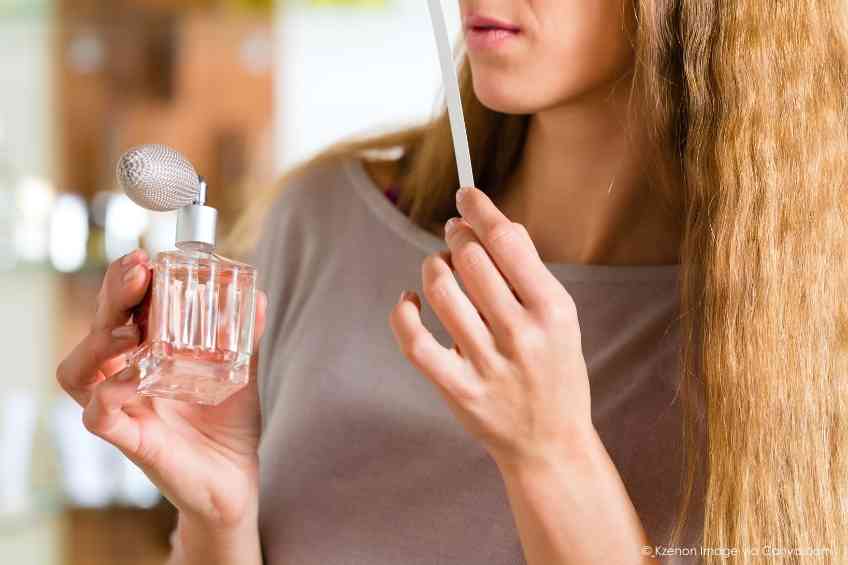By John Salak –
Get a whiff of this. Retail products of virtually any kind score better with potential customers if manufacturers can blend an approach scent with an alluring photo. This recent boast by a team of international researchers may just help reinvigorate the whole scratch-and-sniff phenomenon from the 1980s that so many would prefer to forget.
Ultimately, the researchers reported that scented products with relevant images on their packaging and branding, such as flowers or fruit, are more attractive to potential customers and score better in produce evaluations. They went on to note that such images are particularly effective if manufacturers and marketers choose pictures that are more likely to stimulate a stronger sense of the imagined smell. This might involve, for example, using cut rather than whole lemons.
The combined approach is a double whammy that helps seduce a person’s eyes as well as their olfactory senses. The possible endgame for manufacturers and marketers using this technique is a cost-effective way of promoting an ever-expanding range of scented products that goes beyond the obvious, such as perfumes, candles and air fresheners, to include products like bottled water and greeting cards when adequately bound by image and odor.
Scent is already a recognized appealing draw. This realization in part led to the emergence of scratch-and-sniff technology in the early 1970s, which became increasingly popular over the next 20 years. Since then, the power of various smells has helped revolutionize marketing.
“Scent and memory are deeply intertwined. Scientists believe that this is because olfactory cues are the quickest to reach our limbic system, and our real-world experiences confirm it. Catching a whiff of your grandfather’s cologne or your mom’s homemade pasta sauce can make you immediately nostalgic, even emotional,” marketing consultancy Sales Factory reported recently.
Admittedly, scent-based advertising and marketing schemes have limitations, but when used properly scent alone is a powerful force.
“While not all products lend themselves to being sniffed (wafting the fragrance of burgers through a bay of grilling products makes more intuitive sense than grass-scented garden shears, for example), it pays to tap into your audience’s sense of smell in other branding touchpoints. Use the interconnectivity of the senses to your advantage and look for ways to suggest scents through your use of vivid imagery, descriptions, and sound cues,” Sales Factory added.
However, the paper outlining the international research results noted that a great deal of product branding falls short because it does not include an image evoking an appealing smell. In some marketing efforts, clients even wind up choosing images that reduce consumer appeal. These examples include objects whose unpleasant odors the product is designed to disguise, such as old trainers or ashtrays.
Unfortunately, the study confirms using these images does not help drive sales. It went on to also reveal that only 27 percent of the 957 scented laundry detergents and all-purpose cleaners on sale in the U.S. that were reviewed in the study carried a picture of the object whose scent was recreated in the product.
The researchers determined the power of tying scent to appropriate images after having 200 participants rate and compare more than 500 based on whether images and scents were linked. Those products that included an image appropriately connecting an image to a scent scored significantly higher among the participants than those that did not.
“Marketers and their clients have sought for some time to infuse packaging and even print advertisements with appropriate pleasant fragrances,” noted study co-author Zachary Estes, a professor at the University of London. “There is strong evidence that appealing scents can boost sales in shops. However, for individual products that process is costly and not always particularly practical. It also has limited impact—research suggests that just 11 percent of customers sniff fragranced magazine ads, for example.”
Estes claims there are better and cheaper alternatives. “Our study suggests there is a less expensive route to the olfactory senses—one where people’s imaginations almost do the marketer’s work. It is no surprise that attractive images of flowers or fruit with pleasant smells will attract customers if they are relevant to the product. However, that impact can be magnified by using specific images that intensify stimulation the olfactory senses as well,” he explained.
“It’s reasonable to assume that even when packaging or advertisements carry a scent-related picture, it is initially chosen for visual appeal,” added co-author Varun Sharma, an assistant teaching professor at Carnegie Mellon University (Qatar). “Marketers and their clients need to understand the wider power of such images. Unless marketers fully understand why such pictures are effective and that their impact is multisensory, they may make costly mistakes.”










